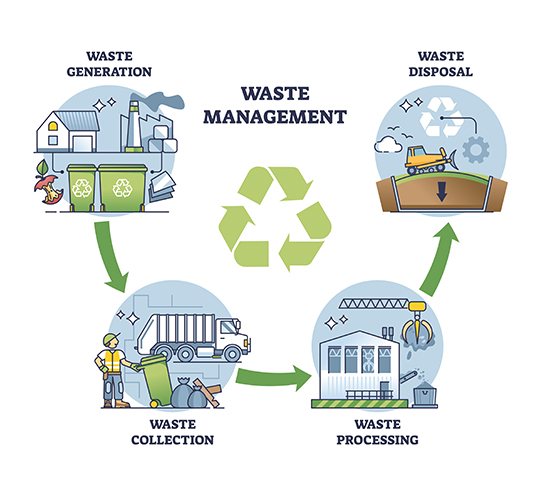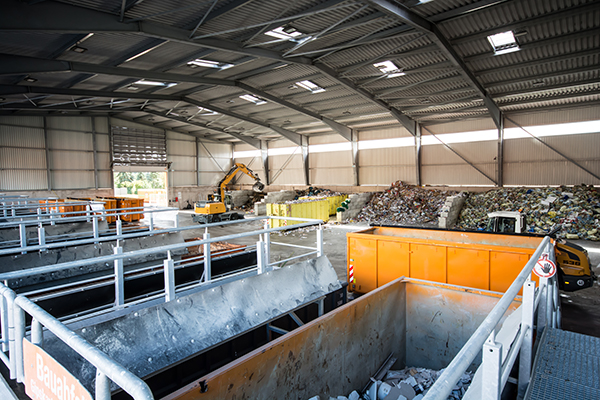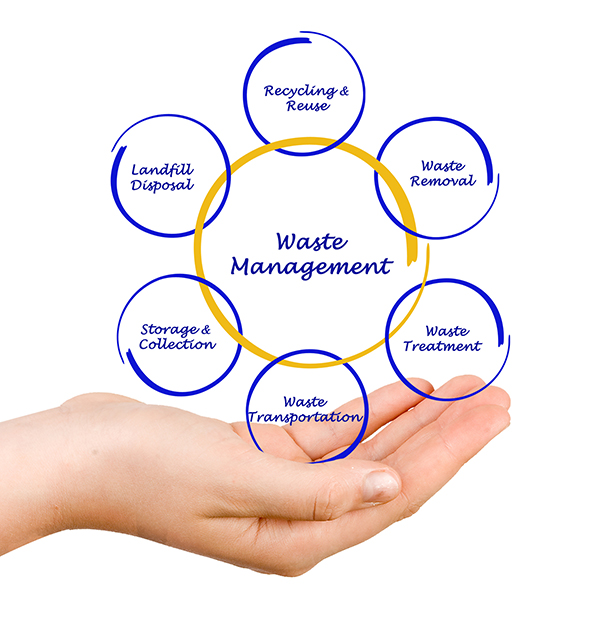Waste Management Responsibility
Who Manages Waste?
Waste Management. Who does this? Better question: Who should do this? To find out we need to know what’s involved and there’s a lot so let’s break this down into categories and explore each area individually.
- Waste generation
- Waste collection
- Waste distribution
- Waste processing
WASTE GENERATION
As individuals, each of us generates waste daily. That makes us a contributor. Businesses, both industrial and retail, generate waste making them contributors too. Communities are contributors to waste. Population growth, economic activity, and consumption all factor in the amount of waste that is produced. Where do we put all this waste that we generate daily?
WASTE COLLECTION
Trash collections services are provided across the world in many different forms. Many households collect trash and push the container to the curb for weekly pickup. Often there is one pickup for waste and another for recyclable items. Industrial and institutional organizations require waste collection services. These types of organizations will have diverse types of waste materials and may require specific processing. In prosperous nations, waste collection has been going on for years. In less prosperous countries, there are likely fewer opportunities for these services. The point is that there is no one solution to waste collection and there are many different programs worldwide. Without a consistency of effort, the challenge of managing waste is exceedingly difficult.
WASTE DISTRIBUTION
 Once collected where does it go? We are familiar with recycling centers that sort collections by material makeup for further distribution to appropriate processors. In turn, the processors convert materials into reusable materials, reducing the amount of trash that ends up in landfills. Agricultural byproducts are processed into bio-based materials and the same is said for forestry waste and household yard trimmings. However, most of the waste will end up in a landfill where there is an escalating process to convert some of that byproduct into renewable energy.
Once collected where does it go? We are familiar with recycling centers that sort collections by material makeup for further distribution to appropriate processors. In turn, the processors convert materials into reusable materials, reducing the amount of trash that ends up in landfills. Agricultural byproducts are processed into bio-based materials and the same is said for forestry waste and household yard trimmings. However, most of the waste will end up in a landfill where there is an escalating process to convert some of that byproduct into renewable energy.
WASTE PROCESSING AND FINAL DISPOSAL
Transportation, storage, treatment, processing, and disposal incur heavy costs. The burden of these costs falls on governments, communities, corporations, and individuals. None of these entities wants to write a blank check so regulations and monitoring adherence is extremely necessary. Additionally, two categories of waste are classified with separate regulations for hazardous and nonhazardous wastes. In the USA the Environmental Protection Agency (EPA) is the regulatory division established by the Resource Conservation and Recovery Act (RCRA). This group establishes guidelines, sets criteria for municipal solid waste landfills (MSWLF) and other waste disposal facilities, and prohibits open dumping of solid waste. Once waste has been thoroughly processed, either byproducts exist or residual waste that has been processed as much as possible. These must be disposed of and often end up in sanitary landfills for final disposal.
CONFORMITY AND CONSISTENCY
Waste management entails an enormous amount of effort, time, and money. Yet, without proper waste management disease would easily spread, and spread rapidly. The importance of waste management cannot be dismissed, but the costs to implement and maintain is burdensome. Since there is a direct relation to the environment, and current controversies surround environmental topics, there is conflict in regulatory development and enforcement. In addition, communities apply the guidelines in varying ways, creating inconsistencies, which could be harmful and not beneficial.
Trash-to-energy technology is being adapted quickly in many countries, especially after China severely restricted imports of waste. Global energy demand in 2018 increased at the fastest pace in a decade furthering the interest in constructing trash to fuel facilities. The benefit would be the yield of electricity to be used to power the new municipal solid waste units.
So, what do the opponents say? The obvious is burning trash releases harmful pollutants into the atmosphere. Contrary to this opinion, studies indicate strict regulations and the employment of scrubbing and filtering have limited the pollutants. Other opponents criticize the practice because it discourages recycling. In the USA, a May 2019 report found nearly 80% of U.S. incinerators are in areas where more than ¼ of the population is low-income, non-white, or both.1 There is further claim that high rates of asthma conditions are found in residents of these areas.
The United Kingdom has experienced protests from British activists wanting to prevent new incinerators and thousands of people signed a petition blocking plans for an incinerator. China and India have also reported thousands of people protesting new incinerators. In addition, “waste pickers” in India are threatened by incinerator operations since gathering reusable waste to resell is their form of income.
But Incinerators make money for the operating companies and this waste-to-energy market is expected to grow globally to the tune of $45 billion. These facilities are expensive to build and operate so when contracts between these companies and municipalities are being composed, stipulations are inserted requiring cities to generate enough waste to fulfill the contract. Opponents of the facilities truly show this as a penalty for not being wasteful enough. Case in point, Indianapolis, IN was cited for $2.3 million for failing to supply the required annual tons of trash.
Now the flipside. Incinerators can be labeled as green energy, earning state subsidies because they are a source of renewable energy and some local or state governments created laws supporting this. Australia’s federal government has such a law. In another twist in Oregon, one operating company threatened closure of a facility unless the state legislates into law similar subsidy benefits.
Big money and increasing public demand are both strong influences. Waste reduction and reuse will reign in high demand along with challenges to producer responsibility laws, product redesign to use less materials, and plastic bans. Zero-waste goals are a challenge but seem to be poised as a focus, from organizations down to individual lifestyles. Individually, we need to encourage efforts to better manage waste, starting with educating ourselves on recycling, reduction and reuse of materials. It really is in our hands.
1 As the World’s Garbage Piles Up, Controversy Over Waste-to-Energy Continues (undark.org)

